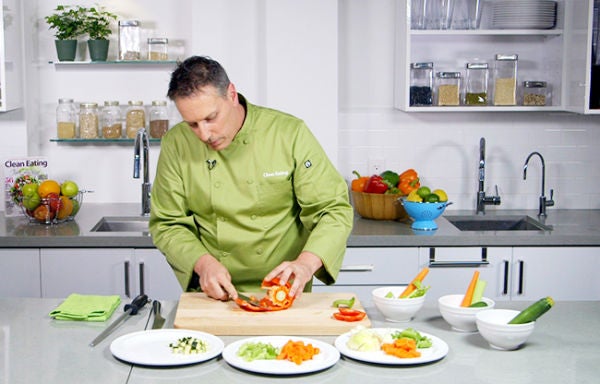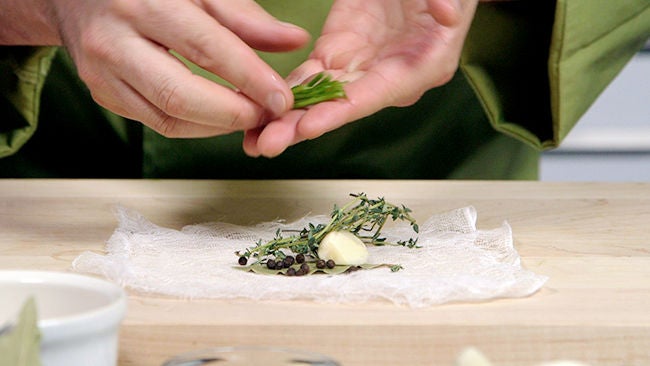Heading out the door? Read this article on the new Outside+ app available now on iOS devices for members! Download the app.
The art of creating a recipe and, by extension, a menu, takes some planning. It’s important to understand who you are creating it for. As a professional chef, you have a responsibility to ensure a dish and menu can generate revenue, but, ultimately, as a cook preparing a meal for family, friends or guests, your goal is to create a culinary experience to remember!
Learn how to cook the way nature intended—clean and with wholesome plant-based ingredients. Register now for our Intro to Clean Vegetarian Cooking & Nutrition course with chef James Smith!
Selecting a Flavor Concept
First, you should determine the concept or main flavor. When I build a menu, my style of pairing and combining flavors becomes an underlying foundation to whatever I do. I like fresh, fruity flavors with big cooking methods like roasting or slow-cooking: for example, peaches with marinated roasted meat. We all have our strengths and favorite techniques such as knife work and sautéing. Some people enjoy taking their time to slice and dice for visual appeal, and some people care less about perfect knife skills and are more interested in the cooking process. Ultimately, the menu you create should be built on the foundations you’re most comfortable with.

Designing a Menu: First, Second and Dessert Course
Next, I think of the overall menu: appetizer and main course. Then, if I’m serving dessert, I determine whether the main course demands a rich finish or light finale to help cut through rich first courses. I try to take the focus flavor and weave it through the appetizer and main course. If I have a really big, bold flavor–like Indian or Thai curry, for example–as my entree, I will select an appetizer with a more intense flavor profile as well.
Tell a Story with Food
I view the menu as a journey or as an opera score that’s telling a story. It could be your story of a trip, a favorite meal or a memory. I think of the menu like the verses in a song. Each course is like a verse telling each part of the story, and the chorus is a main flavor or theme that connects each verse, tying the story or menu items all together.

Tap into Your Creativity
People today are more interested in the experience of cooking and eating, rather than just the mechanical aspects of getting dinner on the table. Find the “talking point” in your recipe, such as, “I had this on my trip to Italy and wanted to make it for you,” or, “I was traveling on a back road in Quebec and came across this maple syrup farm.” When you link your recipe or menu to an experience or concept, it’s easy to write your story one recipe at a time!
Learn how to cook the way nature intended—clean and with wholesome plant-based ingredients. Register now for our Intro to Clean Vegetarian Cooking & Nutrition course with chef James Smith!